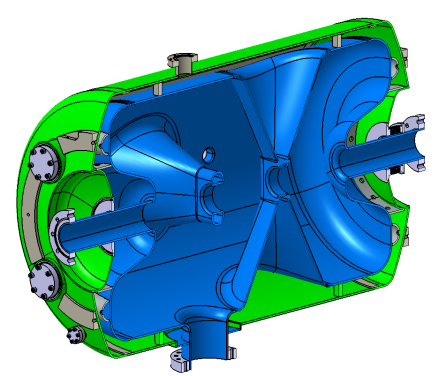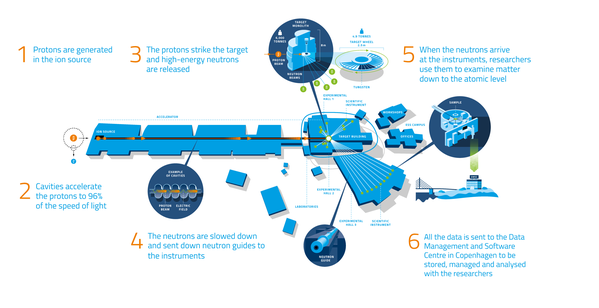European Spallation Source (ESS)
In May 2009 the European research ministers agreed to build the next large European research infrastructure, the European Spallation Source (ESS), in Sweden. The collaboration between ESS and Uppsala University comprise the design of a radio-frequency (RF) power generation and distribution system, as well as testing all components, including superconducting RF accelerator cavities. The new facility was formally established in 2011 and named FREIA (Facility for Research Instrumentation and Accelerators) to take on that project.
The accelerator of the ESS in Lund, currently being built, includes a section with 26 superconducting double spoke resonators, also called spoke cavities, that accelerate a proton beam from 90 to 216 MeV. This type of superconducting cavity has never before been used in an accelerator. FREIA assists in the development and testing of these cavities to prepare for the construction and operation of ESS.


